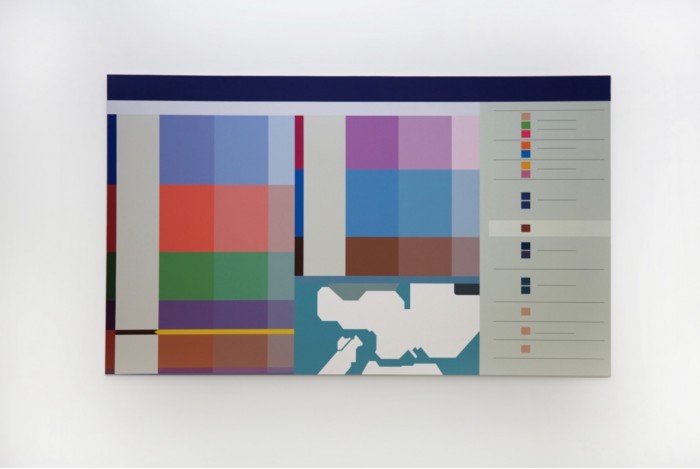
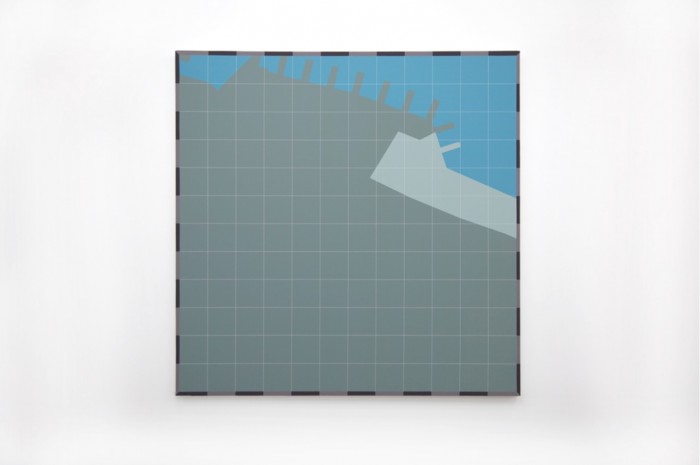
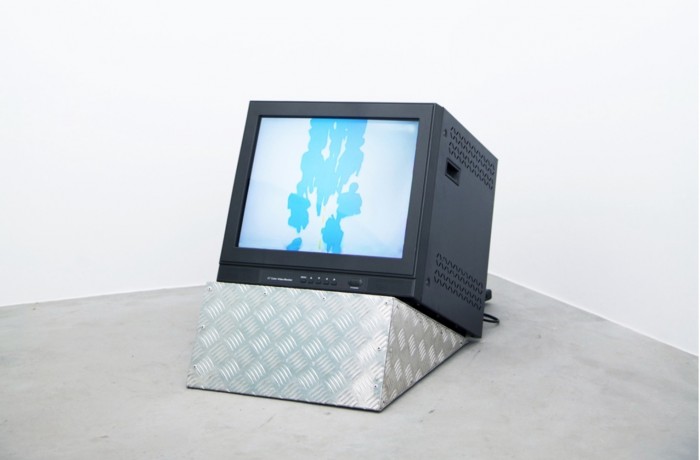
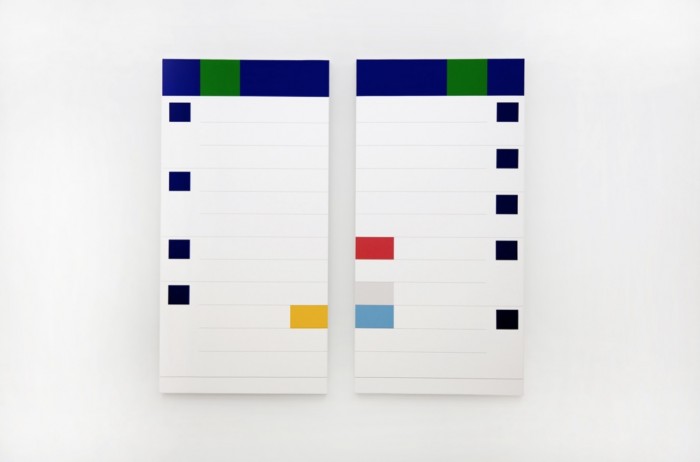
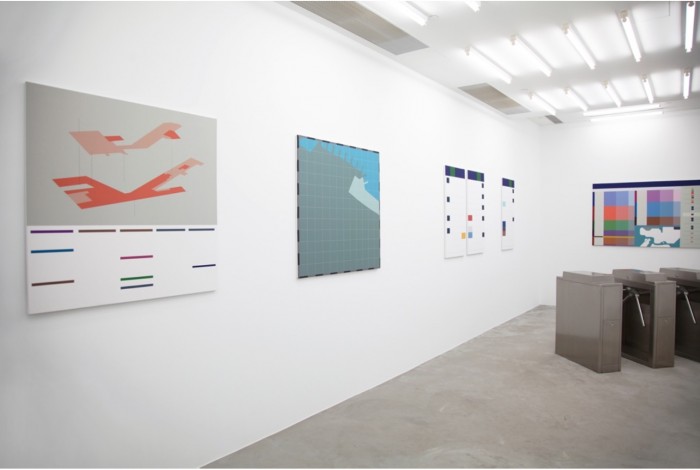

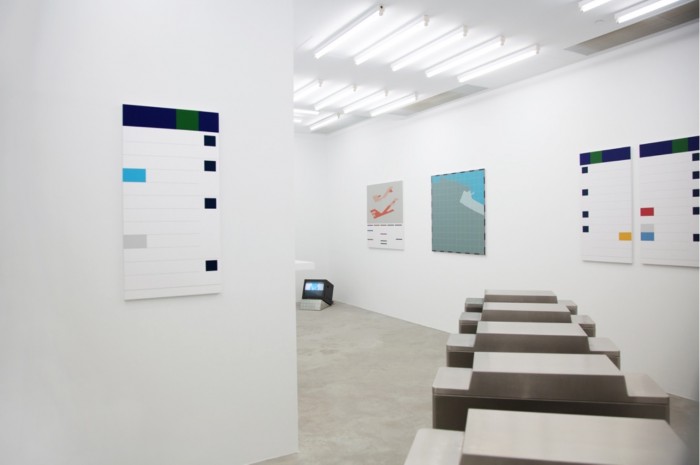
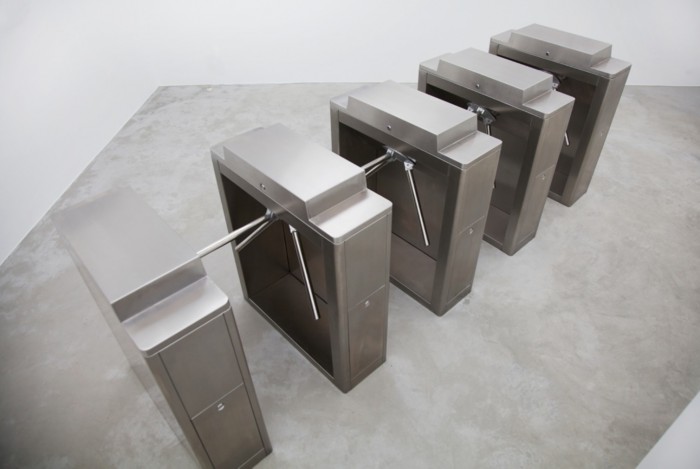
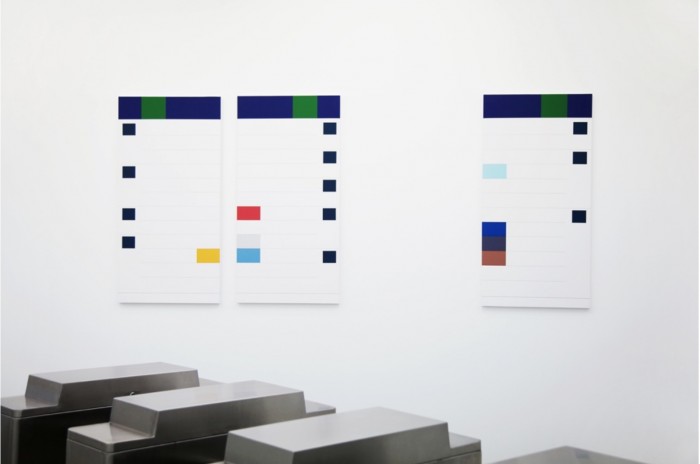
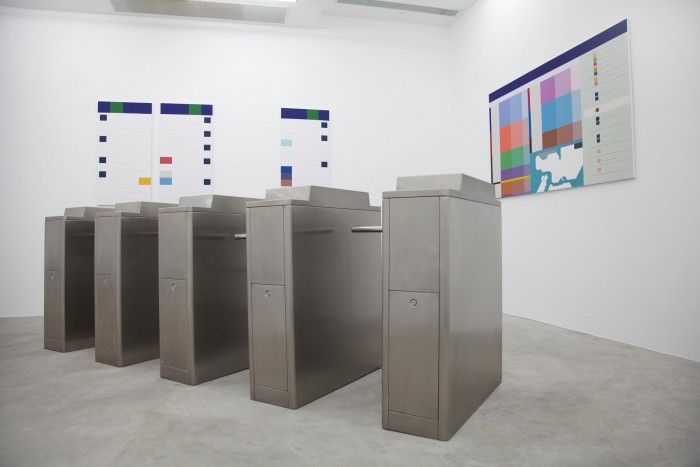
“This presentation introduces a body of work developed in order to confront both the architecture of the space and its environment in the disconcertingly banal office buildings of downtown Central. Beginning from the perspective of the non-spaces manifested in such areas and particularly in public infrastructure like that of mass transit, the artist empties his world of information and specificity, abstracting visual material into little more than shape, color, and tactile experience.
The exhibition centers on a set of turnstiles — nearly identical to those found at the entrances and exits to every subway or other mass transit station — modulated to resemble a minimalist sculpture. Here, the arms of the wheel spin away to a loud and constant clicking, seemingly propelled by the phantoms of the anonymous users who pass through such sterile spaces on a daily basis.
These objects do indeed move in time to the flow of passengers during rush hour, but it is perhaps the sense of naked violence that accompanies their sheer emptiness that most excites. Paiva collapses information onto its original physical carrier, implying through its autonomous motion that the thing itself knows something more than it should.
Accompanying this major installation is a suite of process-based abstract two - dimensional objects also associated with Paiva’s linguistic experiments in the mass transit system. In this case, he has collected as source material the maps, diagrams, signs, and wayfinding aids that codify the flow of bodies through the rail system in Hong Kong, known as the MTR, and emptied them of any representational or symbolic information. Letters, numbers, and other recognizable signifiers all disappear, leaving behind simple color fields that forefront a rather different set of information, doing so primarily through formal and aesthetic concerns.
A set of videos, such as Convergence, also included in the exhibition similarly allows the absent human to appear only in the form of a negative trace: organic forms in block colors move across the screen, generally from bottom to top across an empty field. Although the content is largely illegible, these shapes — appearing at times singly but typically in large agglomerations of flailing lines and moving corners — are actually based on digital models created by observing crowds emerging from and entering the exits of mass transit stations. For Paiva the human is a less provocative category than the tools and codes that define it; as such, here it is the parallel between architecture and algorithm that results in an intense and fascinating visual experience.”
– Robin Peckham, curator